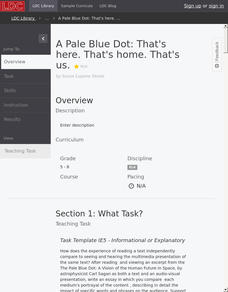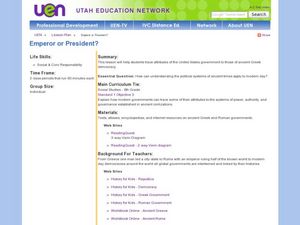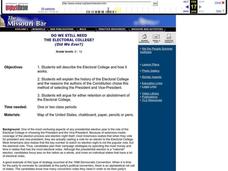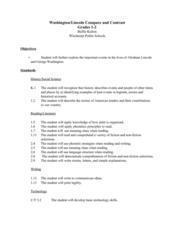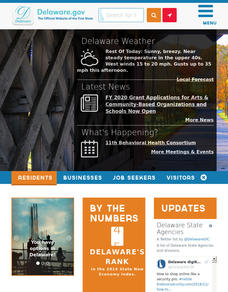Polk Bros Foundation
American Presidents
Emanuel Leutze's painting Washington Crossing the Delaware. Alexander Gardner's photograph of Abraham Lincoln. What do these works of art tell us about the character of these American Presidents? After examining the techniques the...
Literacy Design Collaborative
A Pale Blue Dot: That's Here. That's Home. That's Us.
21st-century learners live in such a visual world that many are unused to letting their minds imagine the picture that words create. An excerpt from Carl Sagan's lecture, "The Pale Blue Dot: A Vision of the Human Future in Space,"...
K12 Reader
Abraham Lincoln Bio Poem
Everyone knows about Abraham Lincoln as a historical figure, but what was he like as a person? Young historians complete a biopoem about Lincoln, including his character traits, his relationships, his fears, and his needs.
Curated OER
Picturing First Families
Students complete a variety of activities as they study Washington, D.C., the Presidency, and George Washington. They take a virtual trip to Washington, D.C., and visit the National Portrait Gallery, the White House, and the Library of...
Curated OER
Fly High with Flag Day
Wave goodbye to the school year with these lesson ideas on how to teach about the significance of the US flag.
Curated OER
The American Revolution: 1775 - 1783
Track the ins and outs and wartime strategies used by both the British and the Americans during the Revolutionary War. Multiple comparisons are made between both factions, maps, statistical data, images, and light text is used throughout...
Stanford University
Great Society
Students explore the Great Society. In this U.S. history and government instructional activity, students view the video "The Great Society," identify the major points of the speech, and compare and contrast the content with The New Deal.
Curated OER
Identify Cause and Effect
Students listen to a story about school in a one-room schoolhouse. In this cause and effect instructional activity, students create a Venn diagram to find the similarities and differences in schools then and now. Students discuss how...
Curated OER
Emperor or President?
Sixth graders complete a Venn Diagram. In this government comparison lesson plan, 6th graders discuss how rules are similar and different at home, school and in their community. Students learn about the type and structure of the United...
Humanities Texas
Primary Source Worksheet: “Report on Manufacturers,” Annals of Congress
Invite your learners to take a look at life during the term of United States president George Washington through analysis of an interesting primary source. The document summarizes American manufacturing capacities, as detailed by the...
Curated OER
Do We Still Need the Electoral College?
One of the most confusing aspects of any presidential election year is the role of the Electoral College. Learners read a bit about how the Electoral College works and then they hold a mock election in their classroom. They'll redraw a...
Curated OER
Gettysburg: The Civil War's Costliest Battle
Students research the Civil War and the Battle of Gettysburg. In this Gettysburg lesson, students analyze journals and letters written by the Gettysburg soldiers. Students define Civil War soldier vocabulary words. Students compare and...
Curated OER
Jefferson vs. Franklin: Renaissance Men
Students investigate the achievements of Benjamin Franklin and Thomas Jefferson. They conduct Internet research, identify their achievements, and participate in a 'competition' that compares/contrasts the two men.
Curated OER
Trip to Mount Vernon
Students compare and contrast travel in the 18th century with current methods of travel by participating in a simulated trip to Mount Vernon. In this US history lesson plan, students write a letter to George Washington for permission to...
Curated OER
Washington/Lincoln Compare and Contrast
Young scholars examine the lives of George Washington and Abraham Lincoln. Using the information, they complete a Venn diagram discovering what the two men had in common. In groups, they review a timeline made in an earlier lesson and...
Curated OER
I Spy
Students examine a letter written by an Army officer from Delaware to the President (Governor) of Delaware during the American Revolution. Students compare the British and American Armies using Howard Pyle paintings.
Curated OER
Post Civil War Reconstruction
Students analyze the process of Reconstruction after the Civil War. In this U.S. History lesson, students discuss specific details about Reconstruction with the class, then complete a worksheet with multiple activities reinforcing the...
Curated OER
LBJ-- Escalation in Vietnam and Domestic Programs
Eighth graders investigate the Vietnam War. In this Vietnam War lesson plan, 8th graders research the escalation of the war during Lyndon Johnson's presidency. Students also explore the domestic programs that Johnson promoted. Students...
Curated OER
Pearl Harbor vs September 11 Attack
Learners compare and contrast the events of the Pearl Harbor Attack and the attack on September 11, 2001 by examining the similarities and differences between these two events.
Curated OER
Electoral College
Eleventh graders discover how the Electoral College works. In this presidential elections lesson, 11th graders compare and contrast the Electoral College and popular vote as they participate in a classroom simulation. Students also...
Curated OER
Nov. 17, 1973 | Nixon Declares 'I Am Not a Crook'
Connect events of the past to events of today. Budding historians read an eight paragraph passage describing the Watergate scandal. They then connect the Nixon scandal to sex scandals of recent times. There are six critical thinking...
Center for Civic Education
Responsibility and the U.S. Constitution
When are responsibilities freely chosen, and when have they actually been imposed on us? Here you'll find a unique way to frame your class discussion on civic duty and responsibilities inherent in the United States Constitution.
Curated OER
Compare and Contrast Composers
Students identify various pieces of music that are familiar to them and define how the music made them feel. Then they select their favorite piece of music heard and the activities in which they like to do. Students also attend a...
National Endowment for the Humanities
James Madison: Madison Was There
Madison was there! Scholars go on a journey to discover the person behind the founding father label as they explore James Madison's role in the formation of the United States government. The culmination is a writing assignment and...



